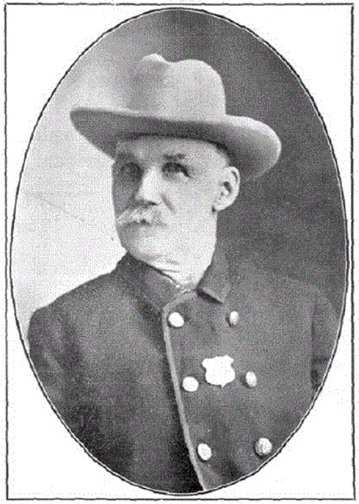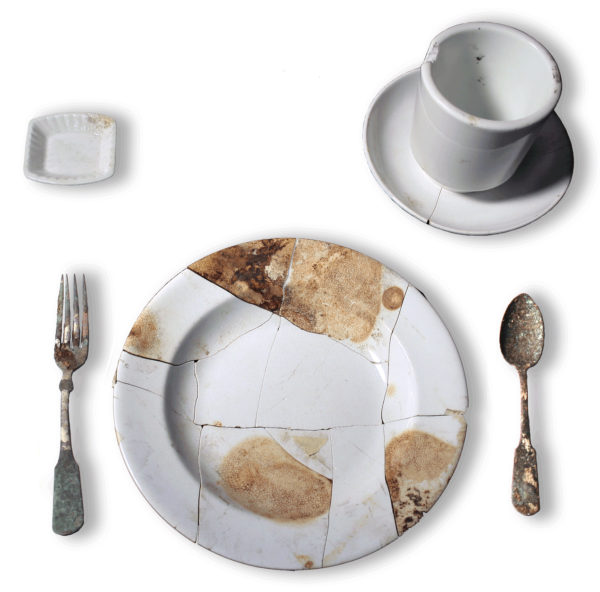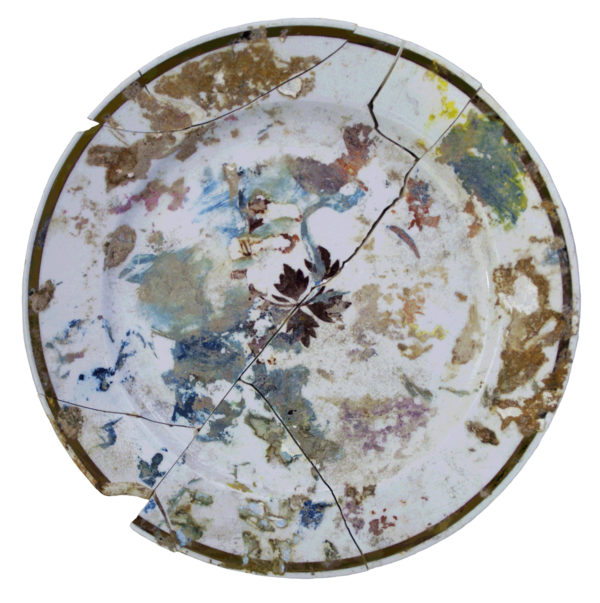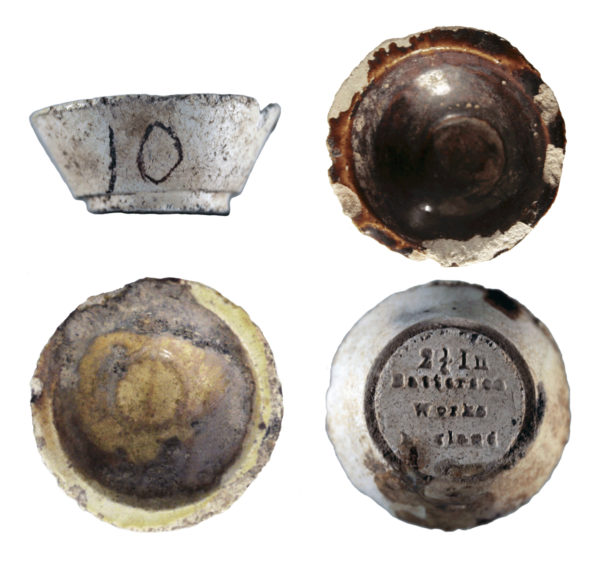
The Archaeology of Scandal: Artifacts, Documents, and the Secrets of Tucson’s First Fire Chief
Historical archaeologist Homer Thiel tells a fascinating story this week about what we found on Block 92.
In 2015, Desert Archaeology excavated the southeastern portion of historic Block 92 in downtown Tucson. Today, the new North Fifth Hotel by AC Marriott is being constructed on the block at the northeast corner of S. 5th Avenue and E. Broadway Boulevard. Historically, the project area saw a pair of residences, stables, early automotive businesses, a service station, a restaurant, and the Flamingo Nite Club, where Parris Marlette performed her “midnight dance with live snakes” when it opened in May 1946.
The entire block was laid out in 1872 into 12 lots, separated by an alley. Our work encompassed all of Lots 9 and 12 and a portion of Lot 8. Lot 8 turned out to the home of a man named Jack Boleyn. A fragment of his house and a well were discovered. Wells are an important archaeological resource, since they often contain trash that can be linked to a specific household. This proved to be the case.

Annotated version of the 1896 Sanborn Fire Insurance map, with Jack Boleyn’s house at 104 S. 5th Avenue the dwelling on the upper right side of the red outlined area (created by Susan Hall).
The upper 1.8-m portion of the well, Feature 18, was filled with bricks, dumped in as the contents of the well had decayed and settled. Below that we mechanically excavated 4.3 m of fill that contained a lot of charred wood, ash, and trash. We dug this out in 30-cm-thick levels, putting the dirt in numbered piles, which we then screened. Archival research revealed that Jack Boleyn’s house and stables had burned on February 24, 1898. This material represented the contents of these buildings, shoveled up and tossed down into an unused well shaft.
A nearby soil mining pit was also dug, yielding a lot of artifacts and food remains generated by the Boleyn household. Together, these two features provided information on aspects of the Boleyn family’s daily life not recorded in surviving documents. Documents, in turn, provided startling information that could never be learned from the archaeological materials.
David John Bolen was born in 1842 in St. Lawrence County, New York. As an adult he was known as Jack Boleyn. He was married four times, first, in 1868, in Hamilton, Ontario to Catherine Davis. The couple had six children, two dying in infancy. The couple operated a hotel and a tavern in Dundas, Ontario, but their license was revoked.
Afterward, Jack left his wife and children, living first in Chicago, where he worked as a sailor, before heading west to California, where he worked in mining camps. He sometimes played his violin at dances. He ended up in Los Angeles, where he was married a second time, bigamously, to Bridget Maria Alice Gill. The two operated a brothel and Boleyn continued playing violin at saloons and dances. Alice eventually lent Jack $1,000, he bought a horse team and a Daisy wagon, and they traveled overland to Tucson in 1880. In Tucson, Jack worked as a dray man, carrying boxes of goods from the railroad depot to businesses and homes.
A series of fires led to the creation of the Hook and Ladder Company, Tucson’s volunteer fire department. Boleyn was appointed Fire Chief. They used water, blankets, and fire extinguishers to put out fires. The first fire house opened next to the County Courthouse in 1882.
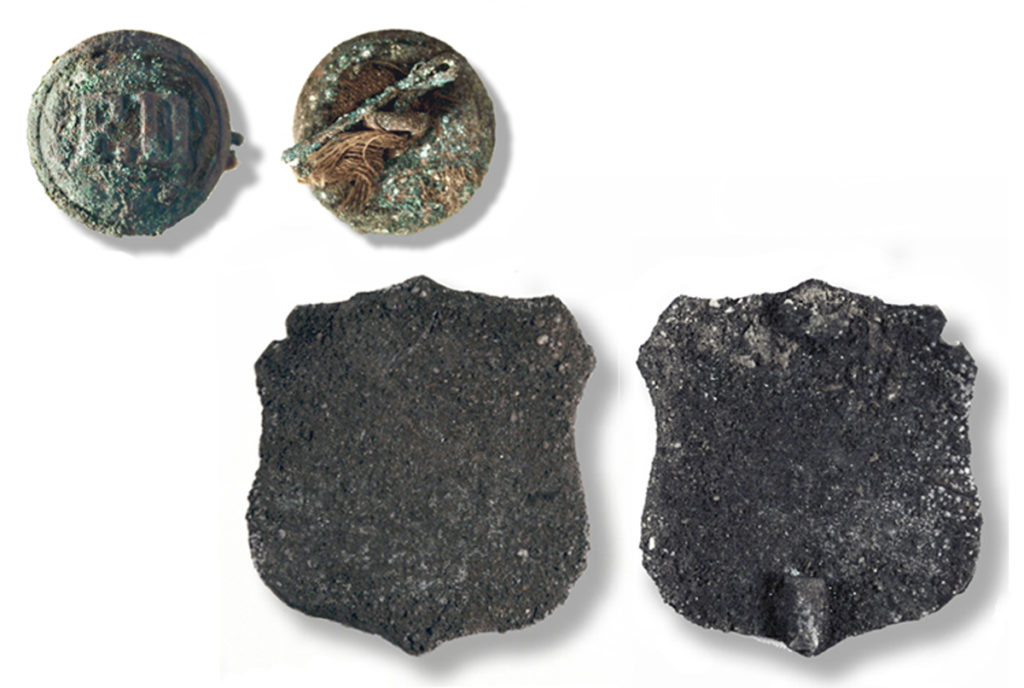
Fire Department uniform buttons and badge found in a pit feature (note buttons and badge in photo of Boleyn above; photograph by Robert Ciaccio).
Alice and Jack separated after a fight in which he struck her on the head with a lamp. She left town. In October 1883, Jack married a young woman named Susan Kile, while still married to the other two women. Susan, in turn, was recently married to Harry Van Bohurst, who, when he found out about her marriage to Boleyn, shot himself in the left shoulder in Boleyn’s stable (he lived). Word spread that Boleyn was a bigamist and he was put on trial and sentenced to 30 days in the Pima County Jail and fined $500. The Arizona Territorial governor was petitioned and he gave Boleyn a partial pardon (he still spent a month in jail).
Afterward, Boleyn divorced Alice in 1886, revealing that she was “leading a life of open and notorious prostitution.” People who knew Alice testified that her “daily conduct was of a most degraded and abandoned character, open and notorious.” The divorce was granted in September 1887. The reason for the divorce was clear: by January 1888, Boleyn married his fourth wife, Annie Frederick. Their marriage was marred by her going insane, and she died in the Territorial Insane Asylum in 1900.
Artifacts in the well and soil mining pit reveal that Jack and Annie pickled food in eight large crocks, apparently pig’s feet, since many pig foot bones were found. As this sort of food preservation was unusual in Tucson, very few pieces of crockery are found at downtown sites (most food was dried). The couple purchased inexpensive, plain whiteware dishes, indicating the Boleyns were not interested in showing off their money (Jack was fairly wealthy).
A tea leaf pattern saucer was an interesting find. Jack or Annie Boleyn were apparently painters, either on dishes or for paintings. The saucer had been used as a painter’s palette, with yellow, green, blue, purple, and turquoise paint residues still adhering to it.
Jack owned and worked several miner’s claims in his spare time, so it was not surprising to find some scorifiers, used in ore assay tests—probably at the nearby Tucson Sampling Works, owned by Charles R. Wore (and excavated by Desert Archaeology in 2009). Horseshoes found on his house lot came from his dray horses or from horses that boarded at his stables.
The 1898 fire at Boleyn’s house was exacerbated by low water pressure in the water mains. Afterward, an embarrassed Boleyn resigned as fire chief. However, he still volunteered, and in November 1910 the Goldring Store caught fire. Jack went inside the building to fight the blaze. Water on the building’s tin roof became boiling hot and when the roof collapsed, Boleyn suffered severe burns. He died the next day. After his death, his first and second wives fought over his estate, Catherine Boleyn eventually getting everything. Almost a century after his death, Jack’s grave in Evergreen Cemetery finally received a tombstone.
The archaeological work for this project was funded by 5 North Fifth Hotel, L.L.C.



